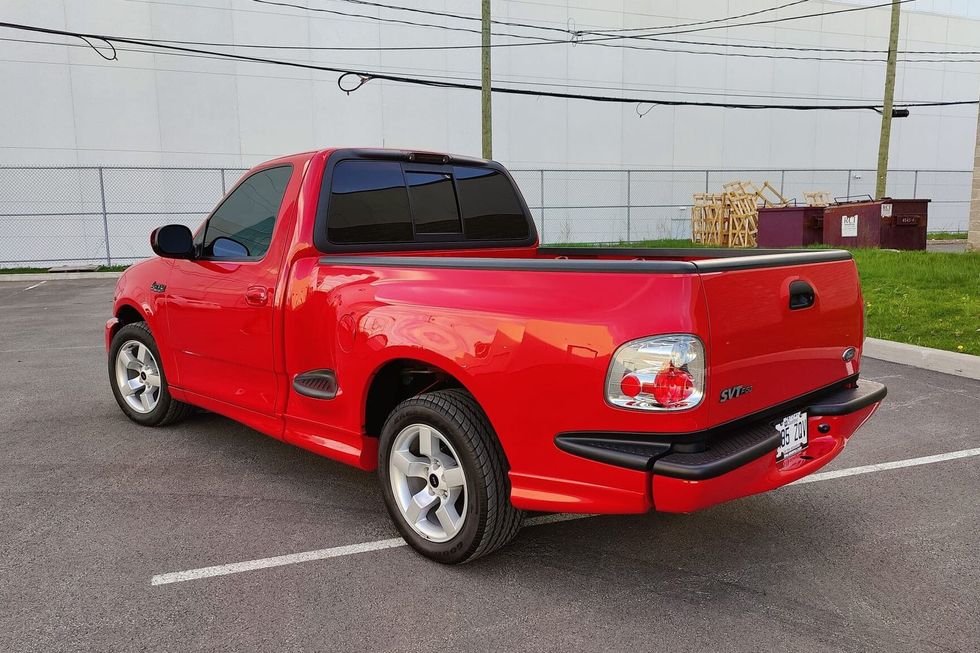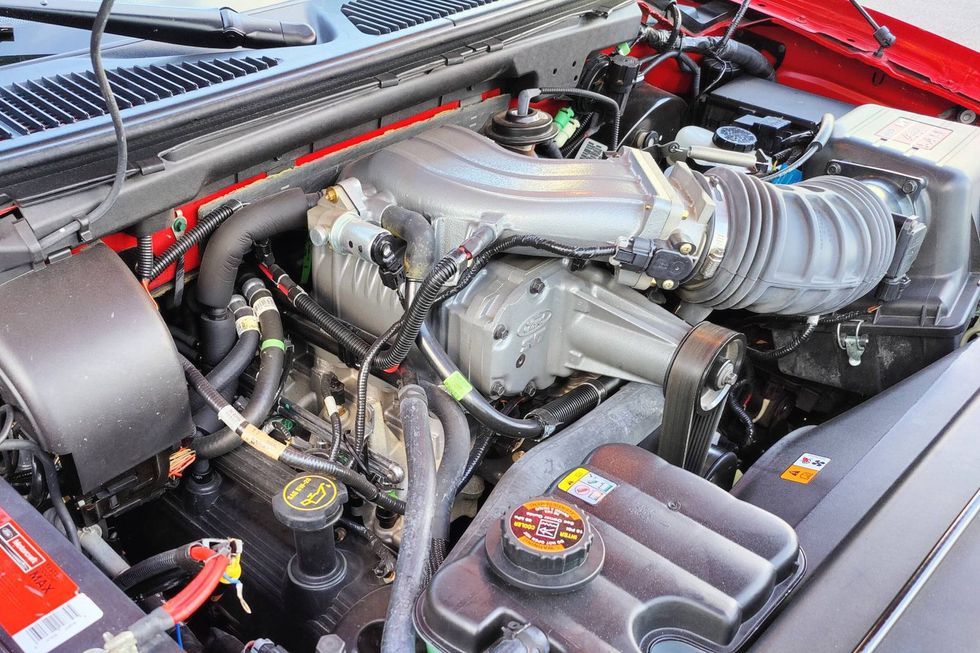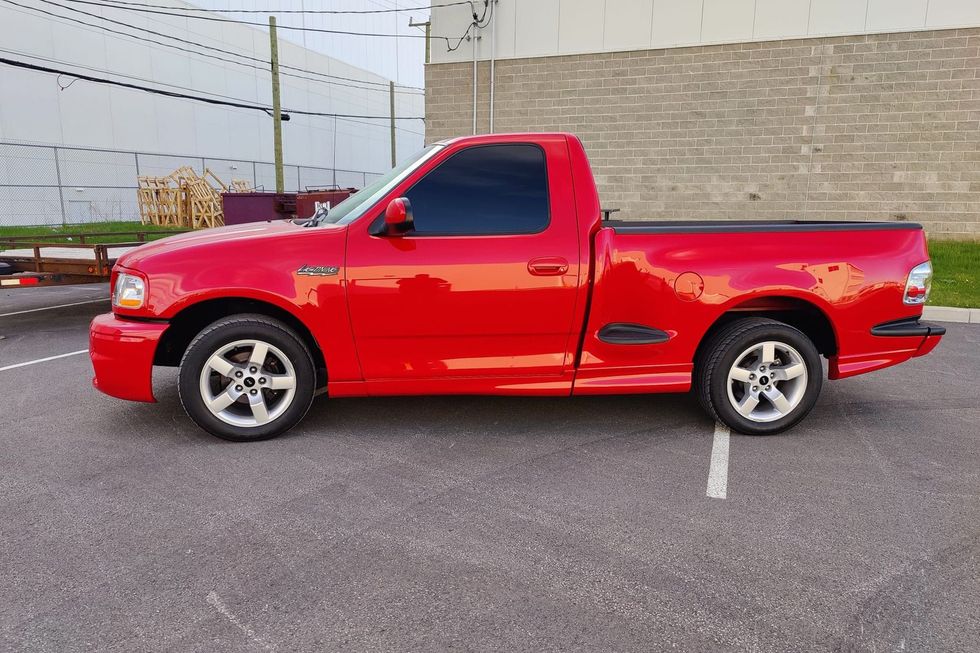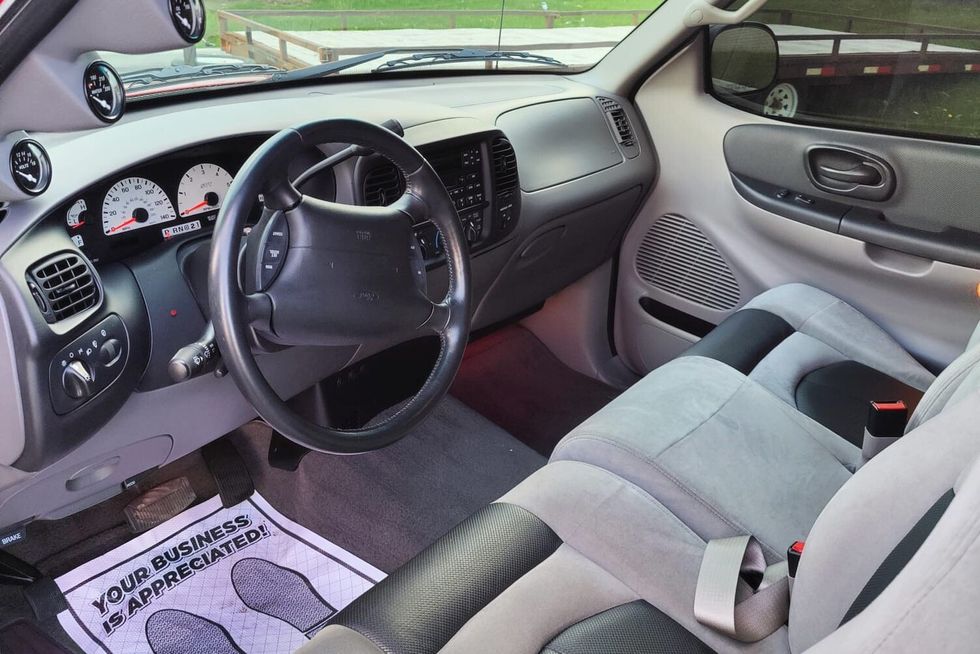Memorable Mirada - 1980 Dodge Mirada
A sharp new suit made up for pedestrian underpinnings when Dodge redesigned its personal luxury coupe
09/23/2018


Dodge left no doubt in anyone's mind about the intended market for its flashy new coupe. The ads spelled it out, A-B-C-style: "If you own a Thunderbird, Grand Prix, Monte Carlo, Cutlass Supreme, Regal or Cougar, you owe it to yourself to test drive The New 1980 Dodge Mirada." It was an ambitious hit list -- together, those six nameplates had accounted for more than 1.5 million sales in 1979 alone, as Americans showed no sign of breaking off their love affair with the personal luxury coupe. Not lost on Highland Park was the fact that those would-be competitors were products of the same six brands that Dodge trailed in overall sales. For a cash-starved company like Chrysler in the late 1970s, this must have looked like low-hanging fruit.
The car that Dodge sent out to do battle with the Monte Carlos and the rest was really nothing more than a rehash of old, familiar Mopar ingredients slathered with a zesty new sauce. Dodge executives must have realized that the car's appearance would be its greatest asset; why else would they have chosen the Spanish word mirada, which translates into "look," or "view?" With its classic long hood, short-deck appearance and the starched-collar look that had become all the rage after Cadillac unveiled its groundbreaking Seville in 1975, the Mirada whispered of performance, comfort, elegance and luxury. It was sorely needed in a lineup that, one automotive writer observed, featured "many cars as uninspired as custard, as competitive as Vassar in the NBA, and as thrilling as a slide down a half-cooked noodle."

Though the Mirada nameplate was new for 1980, the concept was not. Its spiritual predecessor was the Magnum XE, a model that was based on the first-generation Chrysler Cordoba. The Cordoba was a sensation as the first modern, small Chrysler, but its Dodge counterpart failed to crack 75,000 in sales in 1978 and 1979 combined, its two years of production. When the wave of Corporate Average Fuel Economy-inspired downsizing that had swept over Detroit in the late 1970s finally hit Chrysler, the second generation J-body Cordoba was born, and the Magnum was reborn as the Mirada.
Chrysler was the last of Detroit's Big Three into the pool with smaller, lighter personal luxury cars -- Ford had cut hundreds of pounds from its Thunderbird and Cougar XR-7 in 1977, and GM had followed suit with the Regal, Cutlass Supreme, Grand Prix and Monte Carlo a year later, lopping off as much as 750 pounds of road-hugging weight with nearly no sacrifice in interior space. Chrysler didn't have a lot of cash for engineering a new platform, so it did the next best thing: It borrowed the underpinnings of its new-for-1976 compact twins, the Dodge Volaré and Plymouth Aspen. The new Mirada and Cordoba shared nearly everything under the skin with the Aspen and Volaré four-door sedans and wagons: the 112.7-inch wheelbase, the transversely mounted front torsion bars, and the rear leaf springs with Chrysler's "Iso-Clamp" attachment system, which employed rubber donuts sandwiched between the springs and the body to reduce the transmission of noise and vibration into the passenger compartment. The Cordoba and Mirada had the Aspen/Volaré's 60-inch front track, and the 1-inch-wider 59.5-inch rear track of the Chrysler LeBaron and Dodge Diplomat, which were also based on the compact twins.
Even more sharing went on under the hood. In the interests of thrift, the base Mirada was equipped with the antediluvian Slant Six, displacing 225 cubic inches and pumping out all of 90hp at 3,600 rpm and 160-lbs.ft. of torque at 1,600 rpm. Three more powerful engines were offered: a two-barrel version of the workhorse LA-series 318-cu.in. V-8 making 120hp at 3,600 rpm and 245-lbs.ft. of torque at 1,600 rpm; a four-barrel 318, producing 155hp at 4,000 rpm and 240-lbs.ft. of torque at 1,600 rpm; and the high-po option, a four-barrel 360-cu.in. V-8, squeezing out 185hp at 4,000 rpm and 275-lbs.ft. of torque at 2,000 rpm. Unless you lived in California, that is, in which case your only choice would have been the 318. Whichever engine you chose, it would be bolted up to a three-speed TorqueFlite automatic transmission, with shift on the column or, if you ticked off the right box on the options sheet, on the console.
Ernie Barry was the lead designer on the Mirada. "The body style of that car was the same as the Cordoba, and that was the car that we did first. You developed one and then you did whatever the sister ship was that was derived from it," he explained in a telephone interview from his home in Northport, Michigan. "I remember the studio that it was done in back in Highland Park. Back then we were probably working on that in 1977-'78." The project was well underway when Lee Iacocca arrived in 1978 to try to save the corporation from financial ruin. "The styling of the car was in his taste. He had a tendency to like vehicles that had classic appearances. The Cordoba and the Mirada certainly fit that. The body shapes were very linear. Very simple body sections, very linear.
"We were trying to do things that wouldn't make it look overly large, trying to make the overhangs not look too long. That was kind of a struggle," Ernie said. The designers sought out the largest wheel and tire combination they could find to fill out the wheel openings, and used a double chamfer around the openings to take up part of the expanse of sheetmetal. Careful detailing with the parking and cornering lamps and bumpers helped keep the squared-off overhangs from appearing too long. "If you look at the upper fender line that goes through the car, there's an arc to that that's kind of like the shear line of a sailboat," he said, another touch that slightly de-emphasizes the car's length. The front end, molded from flexible plastic, was more sporting than the Cordoba's, and was certainly influenced by the front end of the Cord 810 and 812. The designers didn't care for the vinyl landau roofs, "but Iacocca liked them, so they stayed," he said.

Lee Iacocca has that in common with Dave Powers, the only owner our remarkable feature car has ever had. Dave had considered buying a Magnum XE, but decided he didn't care for the styling. When the Mirada was introduced the next year, he headed straight to Lelock Motors in Punxsutawney, Pennsylvania, to place his order. "I liked the sharpness of the lines, the leaner look that it had over the Magnum," he explained. Dave never bothered to compare it with the Grand Prix, the Thunderbird or the rest. "My father had bought Chryslers all my life, and that's the way I was brought up," he said. He traded in the 1975 Plymouth Duster he had gotten after graduating from high school, and took possession of a 1980 Mirada in Eggshell White with a center console, gorgeous 10-spoke cast road wheels, and an AM-FM 8-track player.
We met up with Dave at the AACA fall meet in Hershey, Pennsylvania, last year where he offered us a chance to drive what is possibly the most original Mirada left on the planet -- not that there are that many of them around to begin with. We swing open the long door, thankful that we're not parked close to another car, and we're instantly thrown back into the days of Blondie and Mount St. Helens. If you want to know what a color-keyed interior looks like, check out the Mirada, a product of a time when all trim did not have to be either gray or black. Cherry red flows over the seats, floors, dashboard top, door panels, steering column cover, steering wheel rim -- just about everything but the brushed aluminum instrument panel and the black-and-silver console. We sink into the high-backed, vinyl bucket seat and gaze expectantly at the dashboard, where eight round gauges bolster the car's sporting pretensions. But wait -- some of those deeply set black circles don't have any tenants. A count turns up just four gauges: The large openings are filled with a wimpy, 85-mph speedometer and a gas gauge adrift in a vast black circle, and an ammeter and a coolant temperature gauge occupy two of the eight smaller openings. Every other cutout holds a warning lamp or, in some cases, nothing at all. Ah, well, no matter. The interior is spacious, and there's even room for adults in the back.
A twist of the pentagon-topped key in the column-mounted ignition switch is rewarded by the twitterings of the Highland Park hummingbird, Mopar's famous gear-reduction starter. The engine settles into a smooth idle, murmuring through the single exhaust. Boy, is it quiet in this cabin -- Dodge didn't pinch pennies when it came to sound deadening.

This is a reminder of what V-8s were like back a quarter-century ago; even with 318 cubic inches at hand, output is a measly 120hp, thanks to a legislated emphasis on fuel economy and cleaner air. Contemporary testers seemed to want to like the car, but they couldn't find a lot of praise to toss Dodge's way: "The following is taken directly from notes made immediately after driving the dual-exhaust 360: 'Even with duals, not very impressive. Transmission: shifts slowly; no snap like the old TorqueFlite had -- not much fun to drive anymore...'" Motor Trend reported. It is true that the TorqueFlite is loath to downshift, in the interest of squeezing more miles from every drop of OPEC's finest. But the V-8 is smooth and quiet, and its torque is enough to get the car moving with authority on the back roads of Hershey. The underpinnings may be archaic, but they give a firm, yet comfortable ride, effectively smoothing out the rough pavement without inducing motion sickness. Could all of this civility have been a failing? Super Stock & Drag Illustrated magazine wondered: "It is so luxurious and roomy inside, the dual exhausts are so quiet, and the ride is so smooth, that it just doesn't feel like a performance car. While this is very desirable in most cars, it may cause some marketing problems for Dodge."
As it turned out, the Mirada was not the car to shape Chrysler's future; that would be the K-car, which arrived in 1981. The 28,633 Miradas produced in the 1980 model year would turn out to be more than half of the total production; the number dropped to 11,899 in 1981, 6,818 in 1982, and 5,597 in 1983, the final year. Today, any Mirada is a rare and welcome sight.
Owner's View
I ordered my 1980 Dodge Mirada in February of 1980 and it was delivered from the factory on May 27, 1980. This was the first car I purchased after graduating from Indiana University of Pennsylvania. This was the first year of production for the Mirada and as soon as I saw one I knew that was the car I wanted to buy. I never dreamed that I would still own it 27 years later.
I drove the car daily summer and winter until the fall of 1987 when I began to store it during the western Pennsylvania winters. I still have its last set of winter tires in my garage attic. My father and neighbor developed my interest in car shows around this time, and in the summer of 1991 we cleaned the frame and detailed the engine compartment. Since that time I have driven it to hundreds of car shows. I think probably one of my favorite things about the car is its uniqueness. There are very few Miradas in original condition still around. Many people who see it don't even remember the model being in production. My Mirada is still a pleasure to drive today just like it was 27 years ago.
-- By Dave Powers
What to Pay
PROS
The epitome of 1980s style
Affordable -- if you can find one
Great blend of ride and handling
CONS
Trim parts difficult to find
Blunted, CAFE-era performance
Constantly having to answer, "What's a Mirada?"
CLUB SCENE
Walter P. Chrysler Club
P.O. Box 3504
Kalamazoo, Michigan 49003
www.chryslerclub.org
Dues: $35/year; Membership: 5,000
National Chrysler Products Club
26 Belmar Road
Hatboro, Pennsylvania 19040
www.ncpcir.com
Dues: $25/year; Membership: 450
SPECIFICATIONS
Base price: $6,364
ENGINE
Type: OHV cast-iron V-8
Bore and stroke: 3.91 x 3.31 inches
Displacement: 318 cubic inches
Compression ratio: 8.5:1
Horsepower @ rpm: 120 @ 3,600
Torque @ rpm: 245 @ 1,600
Valvetrain: Overhead valves, pushrods and rockers, hydraulic tappets
Main Bearings: 5
Induction system: Carter BBD-8233S two-barrel carburetor
Electrical system: 12-volt, 325A battery, 60A alternator
Exhaust system: Single
TRANSMISSION
Type: TorqueFlite, hydraulic torque converter with planetary gears
Ratios: 1st 2.45:1
2nd: 1.45:1
3rd: 1.00:1
Reverse: 2.22:1
DIFFERENTIAL
Type: Chrysler corporate 8.25-inch
Ratio: 2.47:1; 2.94:1 optional
Drive: axles Semi-floating, flanged
STEERING
Type: Recirculating ball with power assist
Ratio: 15.7:1
Turns, lock-to-lock: 3.50
Turning circle: 40.7 feet
BRAKES
Type: Four-wheel hydraulic, power assist
Front: 11.58-inch ventilated disc
Rear: 10-inch drums
Total swept area: 375.29 square inches
CHASSIS & BODY
Construction: Steel unit-body with isolated front crossmember
Body style: Two-door, five-passenger hardtop coupe
Layout Front: engine, rear-wheel drive
SUSPENSION
Front: Independent, unequal-length A-arms, transverse torsion bars, anti-roll bar, telescoping shock absorbers
Rear: Rigid axle, semi-elliptic leaf springs, telescoping shock absorbers
WHEELS & TIRES
Wheels: Forged alloy
Front/rear: 15 x 7 inches
Tires: Goodyear radials
Front/rear: P205/70R15
WEIGHTS & MEASURES
Wheelbase: 112.7 inches
Overall length: 209 inches
Overall width: 72.7 inches
Overall height: 53.3 inches
Front track: 60 inches
Rear track: 59.5 inches
Ground clearance: 10.2 inches
Shipping weight: 3,453 pounds
CAPACITIES
Crankcase: 4 quarts
Cooling system: 30 pints
Fuel tank: 18 gallons
CALCULATED DATA
Hp per c.i.d.: 0.377
Weight per hp: 28.78 pounds
Weight per c.i.d.: 10.86 pounds
PERFORMANCE
0-60 mph: 10.53 seconds
¼ mile ET: 17.84 seconds at 79.4 mph
Top speed: 106 mph
(Figures listed are for a 360-cu.in. V-8-equipped 1980 Mirada tested by Motor Trend)
PRODUCTION
28,633 Miradas were produced for the 1980 model year
Forget Ford’s groundbreaking electric truck for a moment to consider this 2001 Ford SVT F-150 Lightning now offered on Hemmings Auctions. Instead of the dual permanent-magnet motors found in the current electric Lightning, the 1999-2004 SVT Lightning featured a supercharged version of Ford’s 5.4-liter “modular” OHC V8. Rated at 380 horsepower in the 2001-’04 models, it was good enough to make a stock lightning a formidable opponent on the street as well as at the strip.
A follow-up to the original 1993-’95 F-150 Lightning, which was a high-performance version of a standard F-150, the second-generation SVT super truck presented as a more thoroughly developed model with a lot more exclusive components that further differentiated it from the rest of the F-Series lineup. Beyond the engine, the entire suspension and braking system, not to mention aerodynamic body add-ons, were part of the Lightning package from 1999 through 2004. Exclusive interior components were also part of the package.
At the heart of this SVT Lightning is its iron-block 5.4-liter SOHC, 16-valve V8 with a supercharger and an intercooler. The blower helped it deliver 380 horsepower and 450 lb-ft of torque in 2001, up some 20 horsepower and 10 lb-ft from the ’99 and 2000 models. The Eaton supercharged engine delivered peak boost of 8.0 psi and the engine featured an 8.4:1 static compression ratio, down from the standard 5.4 V8’s 9.0:1, which was rated at 260 horsepower and 350 lb-ft.
Power reached the rear 18-inch cast aluminum-alloy wheels via a four-speed automatic, an aluminum driveshaft and a beefy 9.75-inch, limited-slip rear axle with an acceleration-friendly 3.73:1 final-drive ratio, another upgrade for 2001. Car and Driver magazine reported a 0-60 mph time of 5.2 seconds and a quarter-mile in an E.T. of 13.8 seconds at 104 mph—impressive numbers for a 4,600-pound truck. Top speed was a drag-limited 142 mph.

Trucks generally require a suspension that can handle a full load in its bed while also providing competent driving while empty. But if you fancy one designed to a sports-car standard, then something has to give. In the case of the second-gen Lightning, Ford dropped its payload capacity to a mere 800 pounds. A standard 2001 F-150 Styleside carried a 3,180-pound payload rating, while an F-150 Flareside was rated at 2,005 pounds, some two-and-a-half times the Lightning, which featured the short-bed Flareside body. Towing capacity, likewise, was reduced from 8,800 pounds to 5,000 in the Lightning. But the Lightning’s strengths were never its payload or towing capacities, but it’s ability to perform like a sports car.
As a 21st century performance vehicle, however, the second-gen Lightning was also equipped to handle. A half-inch drop at the front was accompanied by SVT-specific coil springs and Bilstein shocks along with an exclusive 31-mm solid anti-roll bar. SVT’s influence continued at the rear with Lightning-specific five-leaf springs and a 23-mm solid anti-roll bar. The Bilstein setup at the rear included the right-rear shock staggered toward the front of the truck to reduce axle hop under heavy acceleration. The four-wheel antilock disc brakes were cribbed from the three-quarter-ton F-250, with 12.1-inch front rotors at the front and 13.1-inch discs at the rear.

As the years go on, fewer and fewer clean, unmolested low-mileage examples are out there, which is why this 2001 Ford SVT F150 Lightning now on Hemmings Auctions caught our attention. Showing just 5,525.5 miles on its odometer at the time of submission, it is said to be in “mint” condition and have an “immaculate” finish in the seller’s words. No modifications are noted to any part of the vehicle. The 18-inch factory alloys don’t appear to have any curb rash, though the Goodyear performance tires may be original. About the only deviations from stock are the tinted windows.
The latest electric-only F-150 Lightning is certainly a quick vehicle in its own right, but this 2001 edition from the engineers at SVT was built for excitement, not range. It was made with an old-school muscle-car vibe along with modern handling and braking. Which Lightning would you look good behind the wheel of?
Take a look at this second-gen Lightning on Hemmings Auctions before the bidding ends.

Spring is here. As the snow melts and the daffodils bloom, it’s time for many vintage cars to emerge from winter hibernation and get back on the road. Thinking of adding to the collection? We have 10 vehicles in spring-like shades of yellow – including cars and trucks, U.S. and European – to catch your eye.

















































